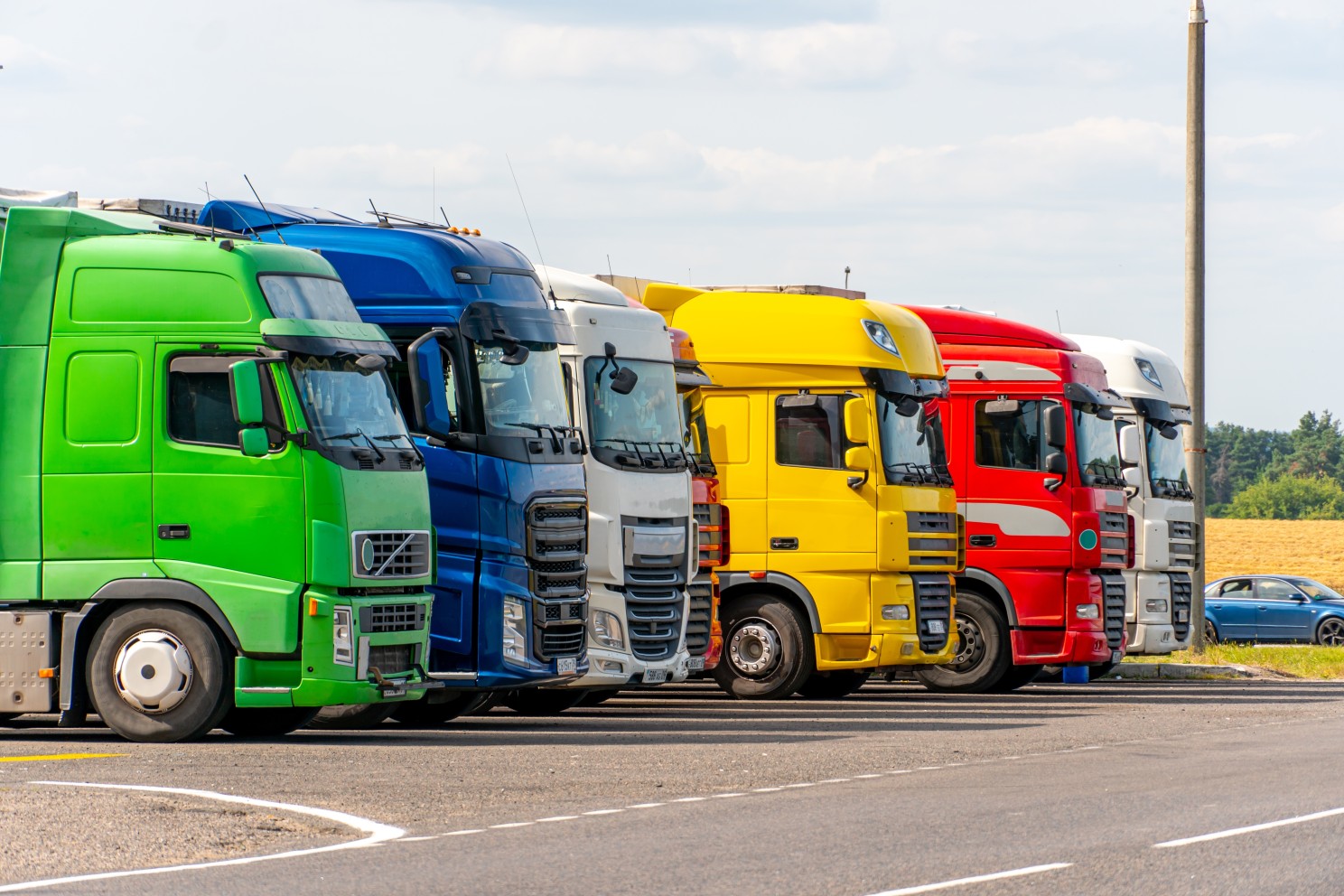
Susie Jones
Ali vozniki namesto bencinskih servisov izbirajo počivališča
Ustvarjeno: 19. 08. 2024
•
Posodobljeno: 19. 08. 2024
Leta 2022 je bilo v Združenem kraljestvu več kot 5.000 prijav kaznivih dejanj v tovornem prometu, kar je pomenilo izgubo v višini približno 66 milijonov funtov. Povečan obseg kaznivih dejanj v zvezi s tovorom predstavlja kritično grožnjo za dobavne verige, podjetja in potrošnike - kar povzroča veliko zaskrbljenost osebam v panogi tovornega prometa.
V poročilu, ki ga je objavila policija v Cambridgeshiru, je navedeno, da se 46 % vseh tatvin tovora zgodi na ulicah in parkiriščih, 27 % pa na bencinskih servisih. Kljub temu je iz družabnega poslušanja razvidno, da številni vozniki iz različnih razlogov še vedno parkirajo na odstavnih površinah.
Težave s parkiranjem na odstavnih površinah
Za voznike je parkiranje čez noč na odstavnem pasu pogosto najbolj preprosta in ekonomična možnost. Vendar ima več slabih strani, ki lahko negativno vplivajo na duševno zdravje in varnost voznika.
Infrastruktura - vozniki potrebujejo več infrastrukture, kot so sanitarije, tuši in hrana. Pomanjkanje čistih prostorov lahko poveča nelagodje ter negativno vpliva na spanje, koncentracijo in duševno zdravje.
Varnost voznikov - parkiranje ob cesti predstavlja dodatno tveganje za varnost voznikov. Študija AA je pokazala, da se dve tretjini prometnih nesreč s smrtnim izidom, v katerih so bila udeležena stoječa vozila na dvopasovnih cestah, zgodita na odstavnih površinah, pri čemer je bila več kot polovica trčenih vozil težkih tovornih vozil.
Kraja tovora - v panogi se je od junija do julija 2023 število kraj tovora povečalo za 380 %, kar kaže na potrebo po varnih in varovanih parkiriščih. Ker se oportunistični tatovi usmerjajo na parkirišča, vozniki tvegajo izgubo tovora, vozni parki pa milijone funtov.
Zakaj vozniki parkirajo na odstavnih pasovih
Kljub tveganjem je družbeno poslušanje, izvedeno prek Facebooka, pokazalo, da je 70 % voznikov iz več razlogov manj naklonjenih izbiri parkirišča za tovornjake namesto odstavnega pasu:
Varnost
Po odzivih iz družabnih medijev se je 43 % voznikov tovornjakov odločilo, da zaradi pomanjkanja varnostnih ukrepov ne bodo parkirali na postajališču za tovornjake ali bencinskem servisu.
"Parkiram samo na parkiriščih ali v industrijskih conah. Kadar sem parkiral na postajališčih, so mi odrezali zavese," pravi voznik tovornjaka Luke.
Varnost in varovanje postajališč za tovornjake v Združenem kraljestvu sta v panogi tovornega prometa vroča tema razprav - vozniki od vlade zahtevajo več podpore za zagotovitev dodatnih varnostnih naprav. Na podlagi prejšnjih povratnih informacij so vozniki želeli, da se dajatev za težka tovorna vozila vlaga v bolj varna, sanitarna in cenovno dostopna parkirišča.
V družbenih medijih je 59 % voznikov tovornjakov izjavilo, da v Združenem kraljestvu v primerjavi z Evropo ni dovolj varnih in varovanih postajališč za tovornjake. To mnenje podpirajo tudi povratne informacije s [SNAP's Truck Park Tour] (https://snapacc.com/truckpark-tour-2023/), kjer je 31 % evropskih voznikov izjavilo, da so imeli največ koristi od dostopa do ekskluzivnih in varnih lokacij SNAP. Varnostna organizacija TAPA je v Evropi splošno priznana - številne lokacije imajo certifikate 1., 2. ali 3. stopnje.
V nasprotju s tem imata v Združenem kraljestvu le dve lokaciji certifikat TAPA, ki ju akreditirajo pooblaščeni revizorji SNAP PSR 3. stopnje. Podjetji Formula Services in The Red Lion imata certifikat 3. stopnje, pri čemer je bilo v podjetju The Red Lion prijavljeno eno kaznivo dejanje, v podjetju Formula Services pa nobeno, čeprav se nahaja na območju z visoko stopnjo kriminala.
Markus Prinz, višji vodja oddelka za standarde, usposabljanje in certificiranje pri združenju TAPA, pojasnjuje: "V celoti podpiramo vse dejavnosti za zagotavljanje učinkovite in varne parkirne infrastrukture za tovornjake ter izboljšanje varnosti voznikov tovornjakov, vozil in tovora. Verjamemo, da lahko z zagotavljanjem odprtega ekosistema za tehnično in ekonomsko optimizacijo varnega parkiranja tovornjakov pospešimo prehod na varno parkiranje tovornjakov."
Nepripravljenost podjetja
30 % voznikov je izjavilo, da njihova podjetja niso pripravljena plačati za postajališča za tovornjake ali bencinske servise. Eden od voznikov je pojasnil:
"Žal vse manj podjetij plačuje za nočno parkiranje, objekti ostajajo odprti le s težavo, zmanjšujejo število zaposlenih, da bi lahko poravnali račune, parkirnine pa je vse manj."
Tovornjaki se ustavijo pri največji zmogljivosti
"Katera postajališča so varovana, lahko ugotovite, saj so polna že ob 18. uri."
70 % voznikov je izrazilo svoje nezadovoljstvo, ker so varna postajališča za tovornjake polno zasedena in jim ne preostane drugega, kot da parkirajo na odstavnem pasu. Podobno mnenje so izrazili tudi udeleženci turneje po parkiriščih za tovornjake - mnogi so izrazili zaskrbljenost, ker so lokacije v Združenem kraljestvu polne že pred prihodom.
Podatki iz raziskave TfL o parkiranju tovornjakov v letu 2022 kažejo, da kljub 12-odstotnemu povečanju zmogljivosti na lokaciji v obdobju 2017-2022 to ne zadostuje za 21-odstotno povečanje števila vozil v istem obdobju.

Zmanjšanje nočnega parkiranja na odstavnih pasovih
Državno financiranje
18 % voznikov si želi, da bi vlada namenila več sredstev za varnostne naprave. Ministrstvo za promet je septembra 2023 dodelilo 8 milijonov funtov 39 obcestnim objektom po vsej Angliji za izboljšanje objektov in varnosti. Ekipa SNAP za dostop in varnost je začela podpirati podjetja, ki so si zagotovila sredstva, z izvajanjem njihovih izboljšav. Do leta 2025 so v okviru vladne sheme za sofinanciranje na voljo nadaljnja sredstva v višini do 100 milijonov funtov.
Varnostne namestitve
Da bi voznikom tovornjakov zagotovili varno območje, lahko postajališča za tovornjake vlagajo v zanesljive varnostne naprave - izdelki, kot so CCTV, ANPR, domofon, ovire in kioski, povečujejo varnost na mestu in odvračajo od kriminalnih dejanj. SNAP Access & Security združuje prilagojene varnostne izdelke in tržno znanje za zaščito ljudi, vozil in vsebine na postajališčih za tovornjake.
Ali lahko vozniki tovornjakov v Združenem kraljestvu spijo ob cesti?
Od 1. novembra 2017 je DVSA uvedel nova pravila in predpise glede počitka voznikov na lokacijah, kot so stanovanjska območja in odstavni pasovi. Vozniki so lahko kaznovani z globo do 300 funtov, če svoj počitek preživijo na počivališču ali ob cesti.
Kako vozniki tovornjakov ostanejo budni med vožnjo?
Vozniki tovornjakov morajo zaradi svoje varnosti in varnosti vseh ostalih na cesti upoštevati pravila tahografa o prekinitvi vožnje. Namen tahografov je preprečiti utrujenost voznikov ter zagotoviti, da vozniki in delodajalci spoštujejo pravila.
Kljub temu je preprečevanje dolgočasja in utrujenosti na cesti za številne voznike izziv in lahko vpliva na njihovo dobro počutje. Večina voznikov med vožnjo najraje posluša glasbo in podcaste, na postajališčih za tovornjake in bencinskih servisih pa se dobro počutijo v družabnih stikih z drugimi vozniki.
Ali lahko vozniki tovornjakov v Združenem kraljestvu prevažajo potnike?
Povprečen voznik tovornjaka preživi za volanom približno 12 ur na dan. V boju proti osamljenosti in dolgočasju lahko vozniki prevažajo potnike, če upoštevajo posebne predpise, ki jih določa FMSCA. Vozniki morajo od svojega podjetja pridobiti pisno dovoljenje, tako da predložijo vlogo za prevoz potnikov - v tej vlogi morajo navesti trajanje potovanja in datume.
Skupne zahteve so naslednje: - Potniki ne smejo biti noseči.
Ne smejo imeti hudih ali kroničnih zdravstvenih težav.
Biti morajo stari deset let ali več.
Zdravstveno zavarovanje je obvezno.



